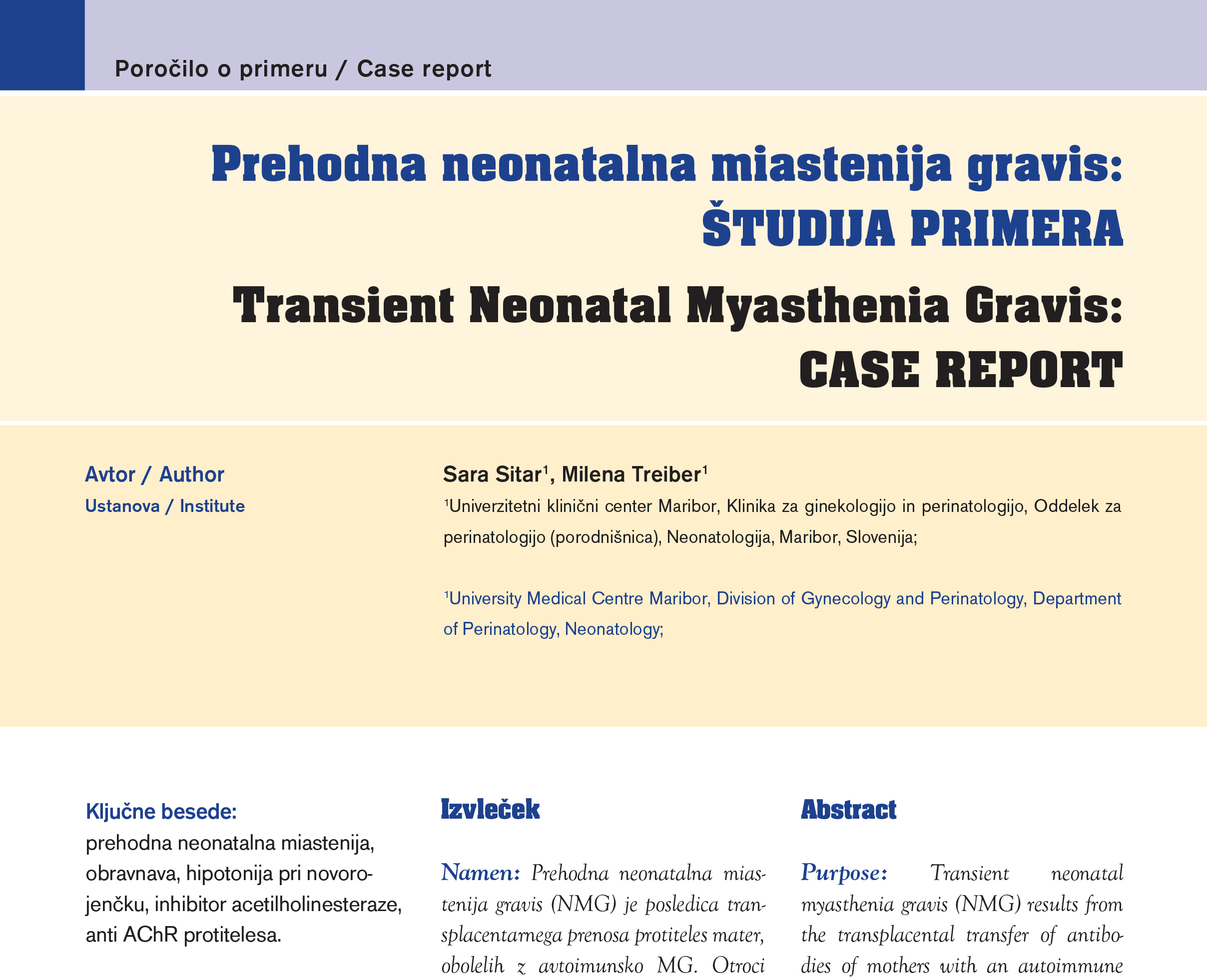Transient Neonatal Myasthenia Gravis: Case Report
Prehodna neonatalna miastenija gravis: študija primera
DOI:
https://doi.org/10.18690/actabiomed.249Keywords:
acetylcholinesterase inhibitor, anti-AChR antibodies, management, neonatal weakness, transient neonatal myastheniaAbstract
Purpose: Transient neonatal myasthenia gravis (NMG) results from the transplacental transfer of antibodies of mothers with an autoimmune form of myasthenia gravis. The clinical presentation develops in 10%–20% of their children. This study aimed to present a case of a newborn with transient myasthenia gravis (MG) born to a mother diagnosed with MG.
Case presentation: The disease manifested itself as generalized hypotonia, weak cry, respiratory distress, poor sucking, and facial diplegia. The symptoms were usually self-limiting, and transient supportive treatment was required. A diagnostic test was a good clinical response of the child to the administration of an acetylcholinesterase inhibitor. After the clearance of antibodies from the child's blood, long-term therapy was not necessary and the disease resolved. Treatment was supportive and included the administration of smaller and more frequent meals via a tube, noninvasive or invasive support of respiratory function, and use of acetylcholinesterase inhibitors (neostigmine and pyridostigmine).
Conclusion: Pediatric patients diagnosed with transient NMG are extremely rare in everyday clinical practice, and hence it is important to be familiar with it.
Downloads

Downloads
Published
Issue
Section
License
Copyright (c) 2023 Sara Sitar, Milena Treiber (Author)

This work is licensed under a Creative Commons Attribution 4.0 International License.